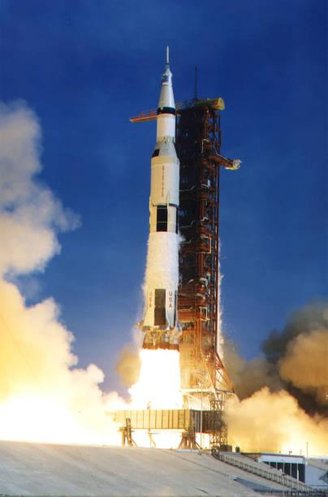On the afternoon of April 11, 1970, three astronauts boarded the Saturn V rocket at the John F. Kennedy Space Center to begin NASA’s Apollo 13 space mission. Confident that they were on track to become the next humans to set foot on the Moon, Jim Lovell, Jack Swigert and Fred Haise left Earth just months after the historic Apollo 11 landing, amid a wave of optimism sweeping through the American space program. .
But 56 hours after launch, everything changed. As an explosion shook the ship, Swigert’s words echoed through mission control and became one of the most iconic quotes of the 20th century: “Houston, we have a problem.” Thus began one of the most dramatic and inspiring missions in the history of space exploration..
This was the seventh The third manned mission of the Apollo program and the planned Moon landing. Its main goal was to explore the Fra Mauro region, a lunar field that could provide important clues about the formation of the natural satellite.
But the Apollo program no longer had the public excitement that followed Apollo 11. After the first conquest of the Moon, space exploration began to seem routine. and Apollo 13 was treated with relative indifference by the media and public.
Saturn V, the rocket responsible for the launch of Apollo 13 and previous missions, was the protagonist of the launch; It was a giant rocket, 110 meters high, with three stages, capable of producing enough energy to place 45 tons into lunar orbit.
But the challenges of this mission would go beyond reaching the Moon: it would be a lesson in survival, creativity, and teamwork.
The crisis began on the night of April 13, 1970, when astronauts routinely shook the oxygen tanks in the Service Module, called Odyssey. This procedure was intended to prevent stratification of the liquid inside the tanks.

However, due to a malfunction in one of the thermostats, a spark inside oxygen tank 2 caused an explosion that seriously damaged the spacecraft. The explosion destroyed and disabled tank 2, leaked oxygen from tank 1, and compromised the ship’s power, water, and life support systems.
Oxygen was vital not only for breathing, but also to power the fuel cells on the ship that produced electricity and water. Without these resources, the Odyssey module became nearly unusable, forcing the astronauts to take refuge in the Lunar Module, called Aquarius, which was initially to be used only for the Moon landing.
Due to the damage to Odyssey, astronauts faced two critical problems: Provide enough oxygen and energy to survive and calculate a trajectory that will bring them back to Earth safely.

Designed to support two astronauts on the lunar surface for about two days, Aquarius had to support three men in space for almost four days. To this end, mission control in Houston developed strategies to save energy and maximize life support efficiency. Lights, instruments and heaters were turned off, and the astronauts faced extremely low temperatures inside the spacecraft.
One of the biggest challenges was the increased concentration of carbon dioxide inside Aquarius. The module’s filters were not enough to support three people for that long.
Engineers on Earth designed a workaround to adapt Odyssey’s filters to Aquarius, using materials found only on Apollo 13. With a combination of duct tape, plastic bags and instruction manuals, astronauts created a work system that saved their lives.
To ensure a safe return, Apollo 13 had to perform course correction maneuvers using its Aquarius engines. The orbit involved a loop around the Moon using gravity to propel the craft back to Earth, a maneuver known as a gravity slingshot. Each maneuver was carefully calculated by mission control, taking into account fuel and energy shortages.

Thanks to these efforts, Apollo 13 re-entered the Earth’s atmosphere 6 days after its launch on April 17, 1970, and landed safely in the Pacific Ocean. Although the mission did not achieve its initial goal, he is widely viewed as a “successful failure”. The ability to solve complex problems in real time has highlighted the best of science, engineering, and human coordination.
“Apollo 13 wasn’t just a journey into space; “This was a journey into the essence of humanity, our desire to explore, our desire to overcome challenges and our desire to survive even when all seems lost.”
The mission proved that teamwork and innovation can overcome the most serious challenges. Today, as NASA prepares to return to the Moon with the Artemis program, the lessons learned from Apollo 13 continue to guide engineers and scientists.
As mission commander Jim Lovell said: “We failed to land on the Moon, but we saved something much greater: confidence in our ability to triumph over the unexpected.”
Source: Tec Mundo
I’m Blaine Morgan, an experienced journalist and writer with over 8 years of experience in the tech industry. My expertise lies in writing about technology news and trends, covering everything from cutting-edge gadgets to emerging software developments. I’ve written for several leading publications including Gadget Onus where I am an author.












